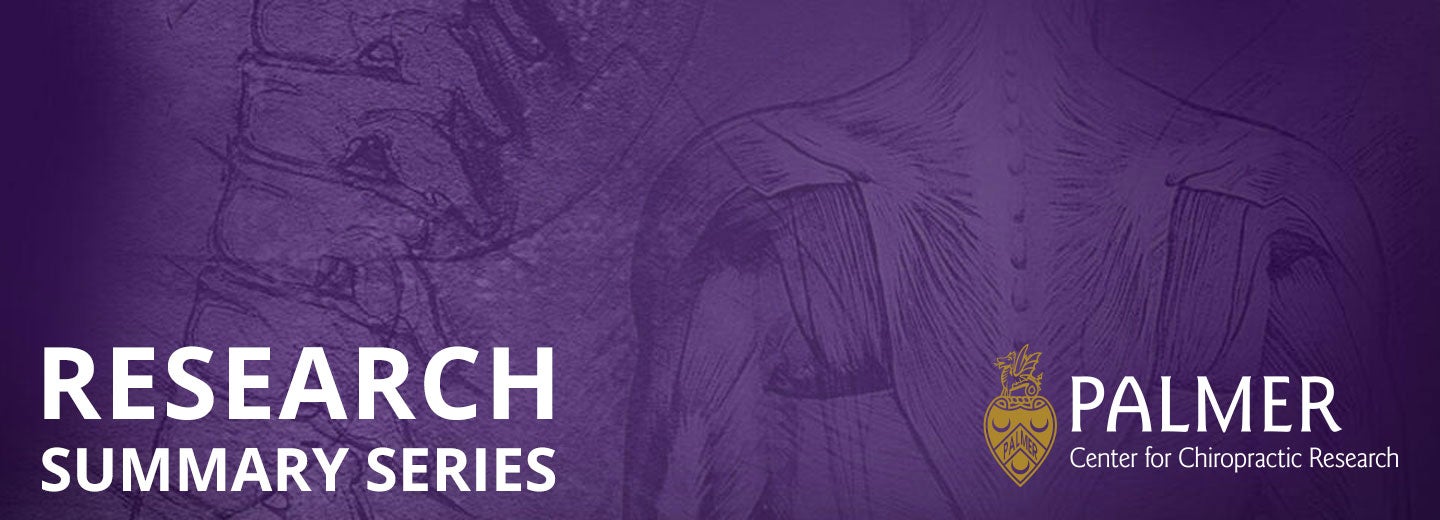Contributed by Maranda Kleppe, D.C. – Post-Doctoral Research Scholar
August 27, 2024
Introduction
Patient education encompasses a broad variety of topics and methods. At its core, education involves activities designed to help patients learn about their condition, foster reassurance, improve symptom interpretation skills, develop greater self-efficacy, and enhance self-management abilities (1). These intended outcomes strongly suggest education should be thought of as a distinct clinical intervention, like spinal manipulation and motor control training. Considering most patients seek chiropractic care for pain-related problems (2), a natural question arises: What research is available to inform patient education about pain?
Pain education was first studied in clinical trials in 2002, focusing on helping patients better understand their pain based on modern pain science principles (3). Pain education uses story and metaphor to describe key neurobiological concepts and offers strategies to reduce and manage pain.
Common concepts addressed through pain education include:
- Why pain is not always the natural result of tissue injury, irritation, or damage.
- Why some pain becomes chronic even after injury has healed.
- Why pain hypersensitivity occurs.
- Factors influencing perceived pain, such as memory, emotions, environment, and social factors.
Pain education has now been studied in many clinical trials encompassing a variety of patients and conditions. When numerous clinical trials have been conducted, assessing them collectively can help clarify the effects of interventions. This process is accomplished through systematic reviews using meta-analysis methods. Ma et al., recently used these methods to evaluate results from clinical trials involving patients with chronic low back pain (4).
Study Details
In a systematic review and meta-analysis of pain education for chronic low back pain, Ma et al, analyzed seventeen randomized controlled trials encompassing 1078 adults, 55% of whom were female. The trials studied pain education interventions in isolation or combined with exercise or physiotherapies (Table 1). Key outcomes studied included pain intensity, disability, kinesiophobiaa, or pain catastrophizingb. The content of all pain education programs was similarly based on pain neuroscience concepts, however, there were differences in key factors such as duration and number of sessions.
Table 1. Therapies and modalities used in studies reviewed by Ma et al.
| Exercise Therapies |
Physiotherapy Modalities |
| Strengthening |
Manual therapy |
| Motor control |
Trigger point dry needling |
| Lumbar stabilization |
Ultrasound |
| Aquatics |
Superficial heat |
| Graded functional activities |
Transcutaneous electrical nerve stimulation |
a Kinesiophobia: excessive and debilitating fear of movement or physical activity.
b Pain catastrophizing: an exaggerated negative mental state surrounding or during a painful experience (5).
Key Findings
Patients reported the most improvement in all outcome measures after receiving pain education combined with physiotherapy or exercise compared to control interventions or pain education alone. Programs with the following characteristics appear to be most beneficial for reducing pain intensity.
- Sessions lasting 60 minutes or longer
- A total of 4 to 8 sessions
- An intervention period of 7 to 12 weeks
- Group sessions
This study also assessed outcomes for statistical and clinical significance, which can be interpreted as follows: statistical significance reflects a high probability that the difference between intervention and control group outcomes did not occur by chance, while clinical significance indicates the clinical improvements are large enough to be clinically meaningful to patients (6). This research suggests that when pain education is combined with physiotherapy or exercise, improvements are statistically significant for all clinical outcomes studied. However, only reductions in pain catastrophizing were clinically significant. Disability and kinesiophobia could not be assessed for clinical significance because different outcome measures were used across trials, preventing pooled data analysis.
Practical Application
Current research suggests that pain education is more effective when paired with other treatments, such as exercise or physiotherapy. These benefits are likely related to the combination of new knowledge and practical learning experiences these activities offer. Combining pain education with therapeutic activities may, either purposefully or inadvertently, facilitate experiencing movement, exercise, and other therapy in a safe setting where providers can assist patients in exploring and personally interpreting their pain (7).
Remaining Questions
Much is still to be learned about how to best conduct pain education. Future research should aim to address questions such as:
- How should content be structured?
- Who is most likely to respond?
- What knowledge is needed to provide pain education?
- How can patient learning from pain education be assessed?
References
- Vining RD, Shannon ZK, Salsbury SA, Corber L, Minkalis AL, Goertz CM. Development of a Clinical Decision Aid for Chiropractic Management of Common Conditions Causing Low Back Pain in Veterans: Results of a Consensus Process. J Manipulative Physiol Ther. 2019 Nov;42(9):677–93.
- Beliveau PJH, Wong JJ, Sutton DA, Simon NB, Bussières AE, Mior SA, et al. The chiropractic profession: a scoping review of utilization rates, reasons for seeking care, patient profiles, and care provided. Chiropr Man Ther. 2017;25:35.
- Moseley L. Combined physiotherapy and education is efficacious for chronic low back pain. Aust J Physiother. 2002;48(4):297–302.
- Ma X, Chen R, Li W, Huang P. A systematic review and meta-analysis of pain neuroscience education for chronic low back pain: short-term outcomes of pain and disability. Physiother Theory Pract. 2023 Jul 3;1–20.
- Sullivan MJL, Thorn B, Haythornthwaite JA, Keefe F, Martin M, Bradley LA, et al. Theoretical Perspectives on the Relation Between Catastrophizing and Pain. Clin J Pain. 2001 Mar;17(1):52.
- McGlothlin AE, Lewis RJ. Minimal Clinically Important Difference: Defining What Really Matters to Patients. JAMA. 2014 Oct 1;312(13):1342–3.
- Ziegler AM, Minkalis AL, Langdon ER, Vining R. Learning the neurobiology of pain: A scoping review of pain education from an instructional design perspective. Patient Educ Couns. 2022 Jun;105(6):1379–401.
The Palmer Center for Chiropractic Research (PCCR) is dedicated to advancing health care for patients by developing knowledge and translating knowledge that improves the practice of chiropractic.

